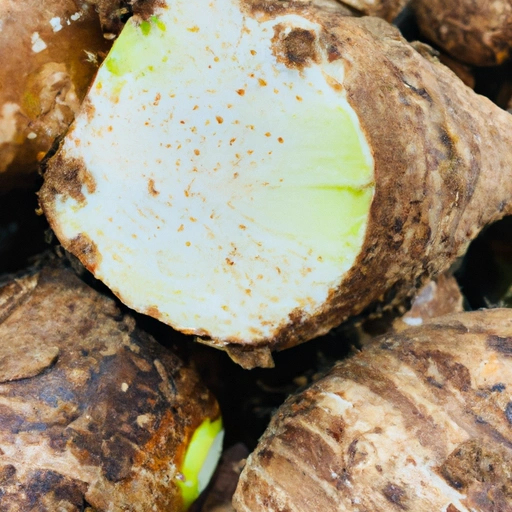Malanga
Description

Malanga, also known as yautía or cocoyam, is a starchy root vegetable that is native to South America and the Caribbean but has since spread to other tropical regions around the world. It is a tuber from the Araceae family, and it is closely related to taro and eddoes. The malanga root has a hairy brown skin and a white or sometimes purplish flesh that is known for its earthy flavor and slightly nutty undertone.
Common uses
Malanga is predominantly used as a food source. Its tubers are consumed after cooking, which is necessary to break down its complex carbohydrates into more digestible forms. The leaves of the malanga plant can also be eaten when properly cooked and are often used as a green vegetable similar to spinach. Additionally, malanga is processed into flour, which can be used for baking or as a thickening agent in soups and stews. In some cultures, malanga is also used for medicinal purposes, where it may be applied topically or consumed to treat various ailments.
Nutritional value
Calories
Malanga is energy-dense, providing about 98 calories per 100 grams (3.5 ounces).
Protein
It contains approximately 2 grams of protein per 100 grams (3.5 ounces).
Fat
Malanga is low in fat, with less than 0.2 grams per 100 grams (3.5 ounces).
Carbohydrates
It is rich in carbohydrates, primarily complex starches, with about 23 grams per 100 grams (3.5 ounces).
Vitamins
Malanga is a good source of B-vitamins, particularly riboflavin (B2) and folate (B9).
Minerals
The tuber contains several essential minerals, including potassium, magnesium, and phosphorus.
Health benefits
Malanga is beneficial for digestion due to its high content of dietary fiber. It also has a low glycemic index, which makes it suitable for individuals managing diabetes. The presence of vitamins and minerals supports overall health, contributing to cardiovascular health, bone strength, and the immune system.
Potential risks
People with sensitivities or allergies to certain root vegetables should be cautious when introducing malanga to their diet. Additionally, because it is high in potassium, those with kidney issues should monitor their intake. Malanga must also be cooked properly to avoid potential irritants found in the raw vegetable.
Common recipes
Malanga is used in various recipes, including soups, stews, purees, and fritters. It is also mashed like potatoes or cut into chunks and roasted.
Cooking methods
Typical cooking methods for malanga include boiling, baking, frying, and steaming. The root should be peeled and can be cooked whole or cut into pieces, depending on the recipe.
Pairing with other ingredients
Malanga pairs well with bold spices, meats, beans, and other root vegetables. Its subtle flavor complements both savory and sweet dishes.
Summary
Malanga is a versatile and nutritious root vegetable valued in various cuisines around the world. With its rich historical background and a plethora of culinary uses, malanga offers an array of health benefits and can be a delightful addition to many recipes. Whether boiled, mashed, or used as a flour substitute, malanga is an ingredient worth exploring by food enthusiasts globally.